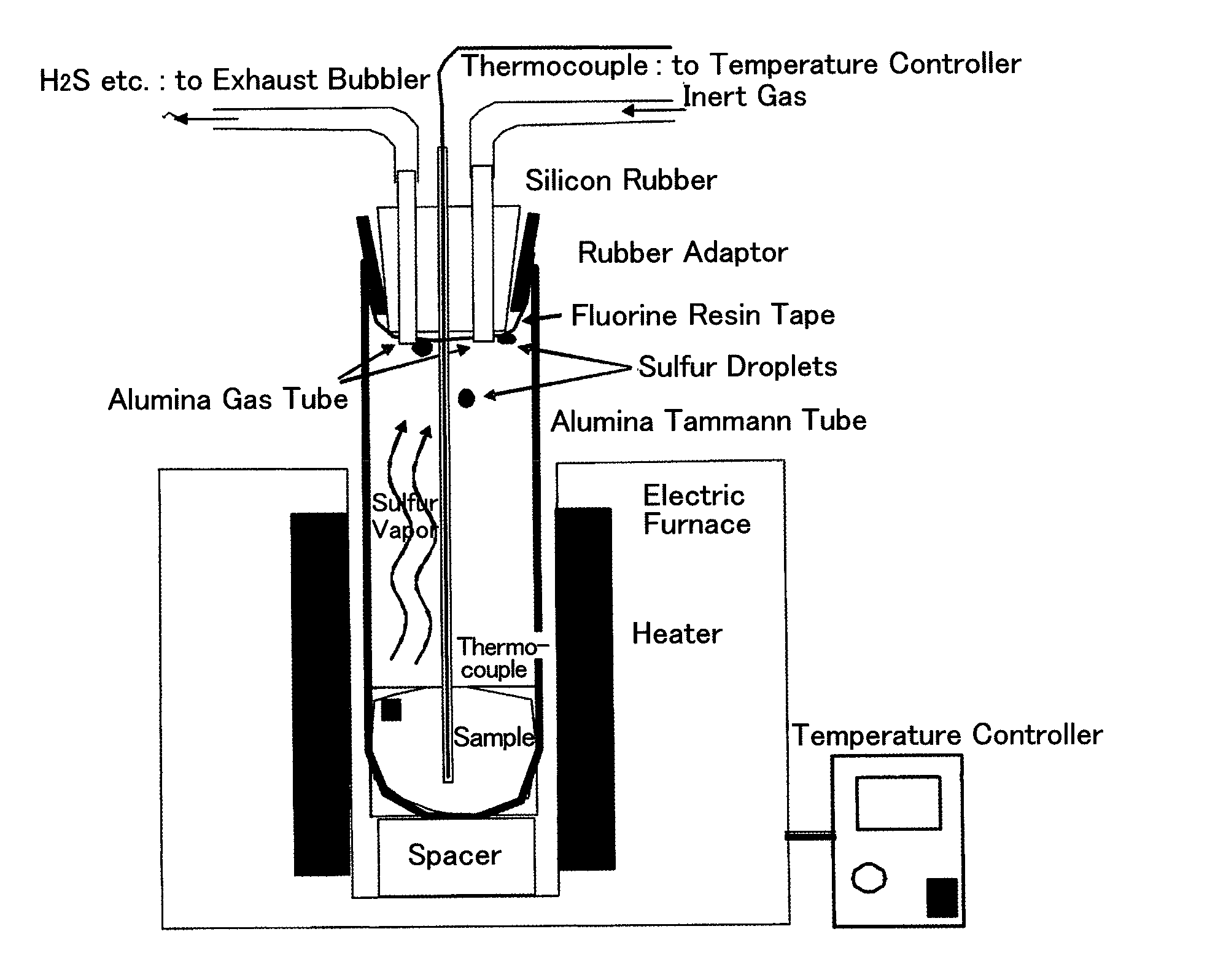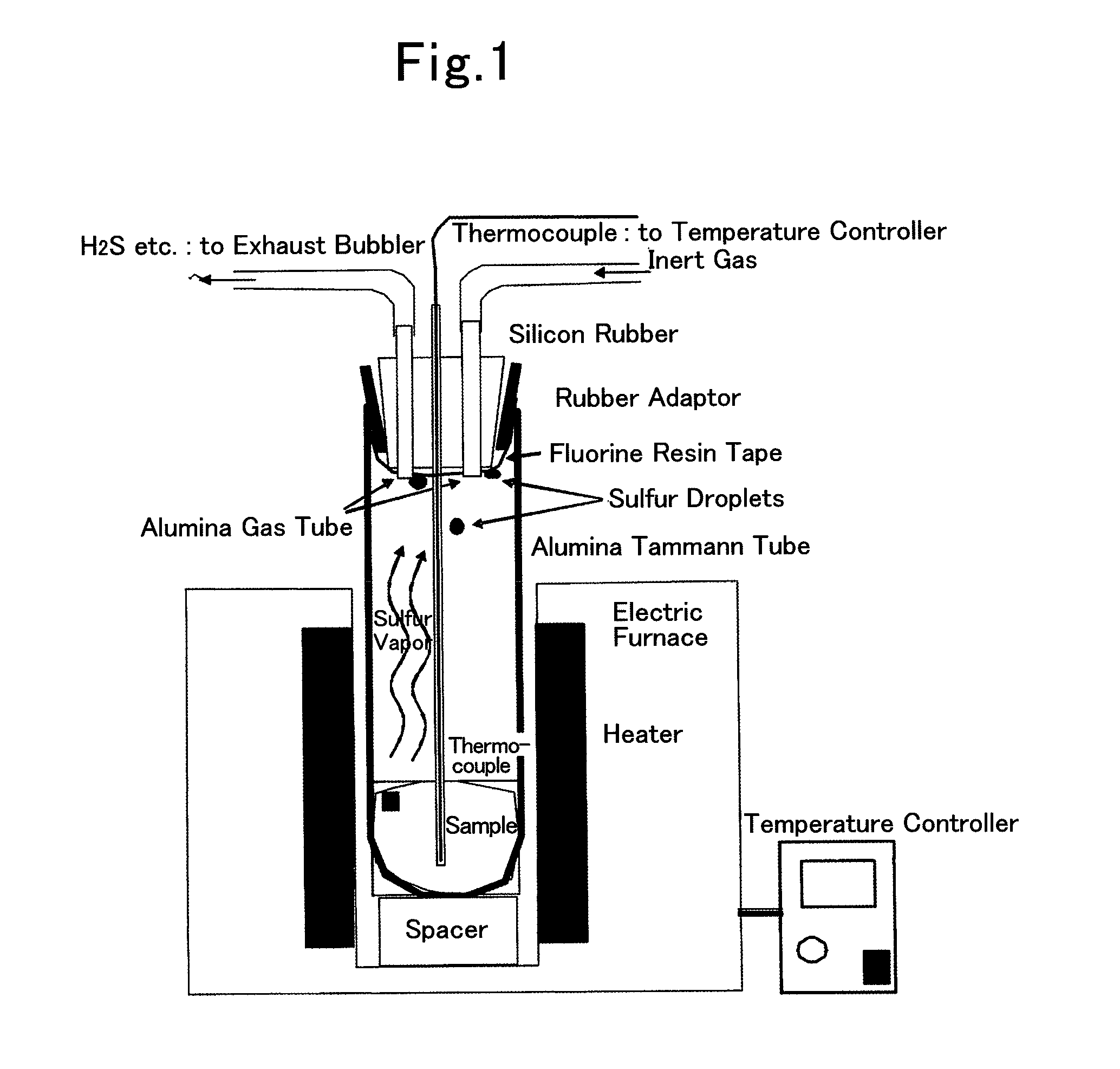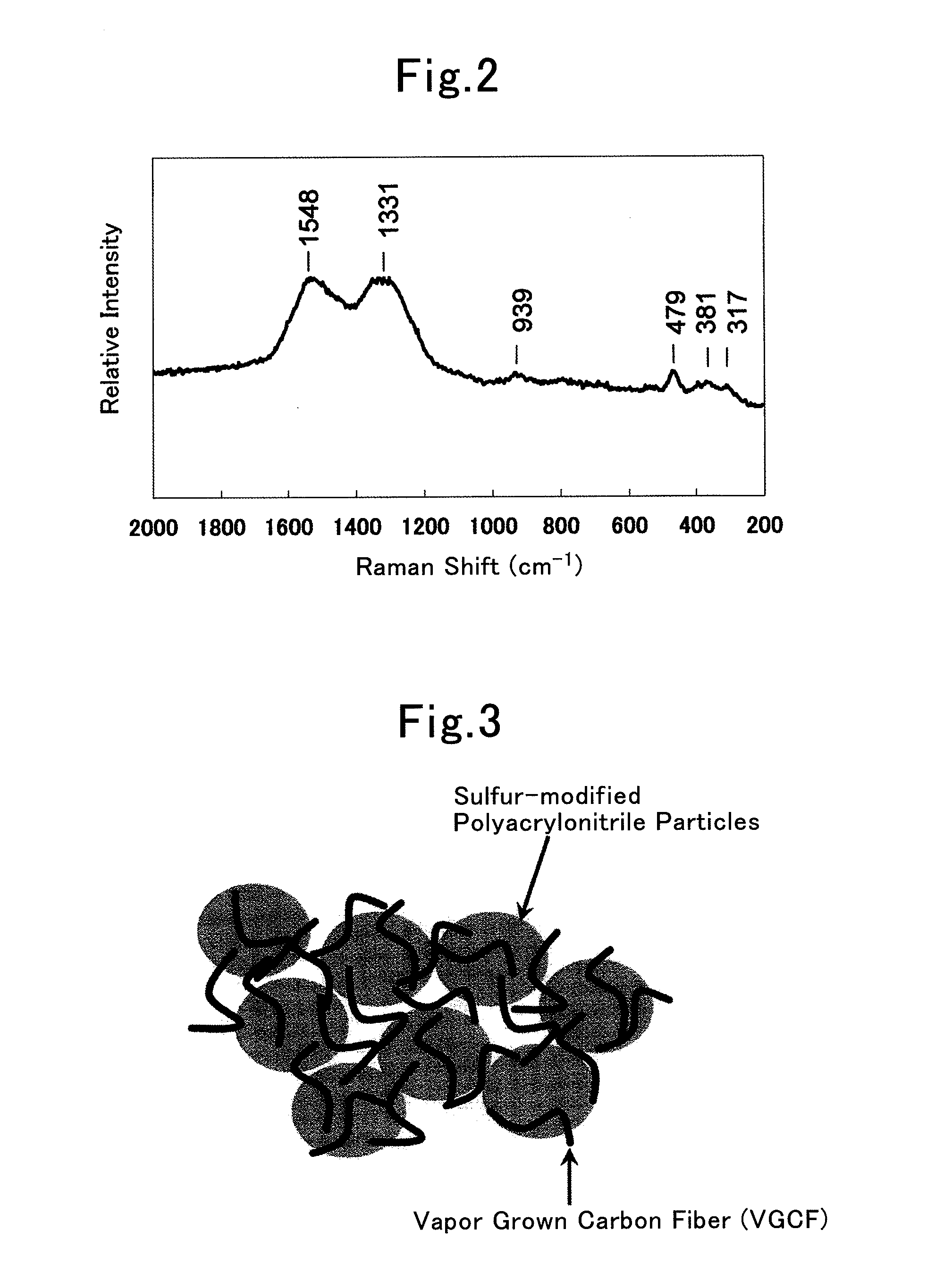Sulfur-modified polyacrylonitrile, manufacturing method therefor, and application thereof
- Summary
- Abstract
- Description
- Claims
- Application Information
AI Technical Summary
Benefits of technology
Problems solved by technology
Method used
Image
Examples
example 1
[0120]1.0 g of sulfur powder having an average particle size of 50 μm and 0.50 g of polyacrylonitrile powder having an average particle size of 1 μm, which are starting materials, were mixed to form pellets having a diameter of 10 mm and a thickness of 5 mm. Subsequently, the pellets were wrapped with aluminum foil, and then additionally wrapped with aluminum laminate film. Then, the aluminum laminate film was fusion-bonded to obtain a sample in which raw material is enclosed.
[0121]The sample where raw material is enclosed and 80 mL of water were put into a 200 cc autoclave, and were then heated to 270 degree Celsius for 6 hours after the autoclave was tightly closed. At this time, the pressure in the autoclave was about 3.7 MPa. Subsequently, the sample was cooled to obtain a pellet-type black product.
[0122]The X-ray diffraction measurement of this product was conducted using CuKα ray emitted from an powder X-ray diffractometer (manufactured by MAC Science Corp., model number: M06X...
example 2
[0126]5.061 g of polyacrylonitrile powder and 25.008 g of sulfur powder were mixed with mortar to make a starting material. This raw material was put into an alumina Tammann tube (outer diameter: 60 mm, inner diameter: 50 mm, length: 180 mm, alumina SSA-S, manufactured by NIKKATO CORPORATION), which is used as a reaction container.
[0127]The opening of the alumina Tammann tube was capped with a silicon rubber plug (No. 15) fixed on a rubber adapter, and a portion of the silicon rubber plug, coming into contact with the atmosphere in the alumina Tammann tube was wound with fluorine resin tape such that the silicon rubber plug does not directly come into contact with the atmosphere in the alumina Tammann tube.
[0128]Three holes was made in the silicon rubber plug, and was provided with an alumina protection tube (outer diameter: 4 mm, inner diameter: 2 mm, length: 250 mm, alumina SSA-S, manufactured by NIKKATO CORPORATION) including a thermocouple therein and two alumina tubes (outer di...
example 3
[0133]The reaction product of sulfur powder and polyacrylonitrile powder was obtained in the same manner as in Example 1, except that the weight ratio of sulfur powder to polyacrylonitrile powder (S:PAN) was 2.5:1.
[0134]FIG. 8 shows the diffraction pattern obtained by the X-ray diffraction measurement of this product. As shown in FIG. 8, abroad diffraction peak was observed at about 25° in a diffraction angle (2θ) range of 20°˜30°, and a sharp peak showing the existence of a sulfur single body was observed at a diffraction angle (2θ) of 23.2°, 24.2°, 24.6°, 25.2°, 25.9°, 26.8°, 27.8°, 31.5°.
[0135]Subsequently, the X-ray diffraction measurement of this product was conducted after pulverizing this product into powder, putting the powdered product into a glass tube oven and then heating the powdered product to 250 degree Celsius for 6 hours while vacuuming the glass tube oven. The diffraction pattern of a sample after heat treatment is also shown in FIG. 8. In this sample, since only a...
PUM
| Property | Measurement | Unit |
|---|---|---|
| Temperature | aaaaa | aaaaa |
| Crystallinity | aaaaa | aaaaa |
Abstract
Description
Claims
Application Information
 Login to View More
Login to View More - R&D
- Intellectual Property
- Life Sciences
- Materials
- Tech Scout
- Unparalleled Data Quality
- Higher Quality Content
- 60% Fewer Hallucinations
Browse by: Latest US Patents, China's latest patents, Technical Efficacy Thesaurus, Application Domain, Technology Topic, Popular Technical Reports.
© 2025 PatSnap. All rights reserved.Legal|Privacy policy|Modern Slavery Act Transparency Statement|Sitemap|About US| Contact US: help@patsnap.com



